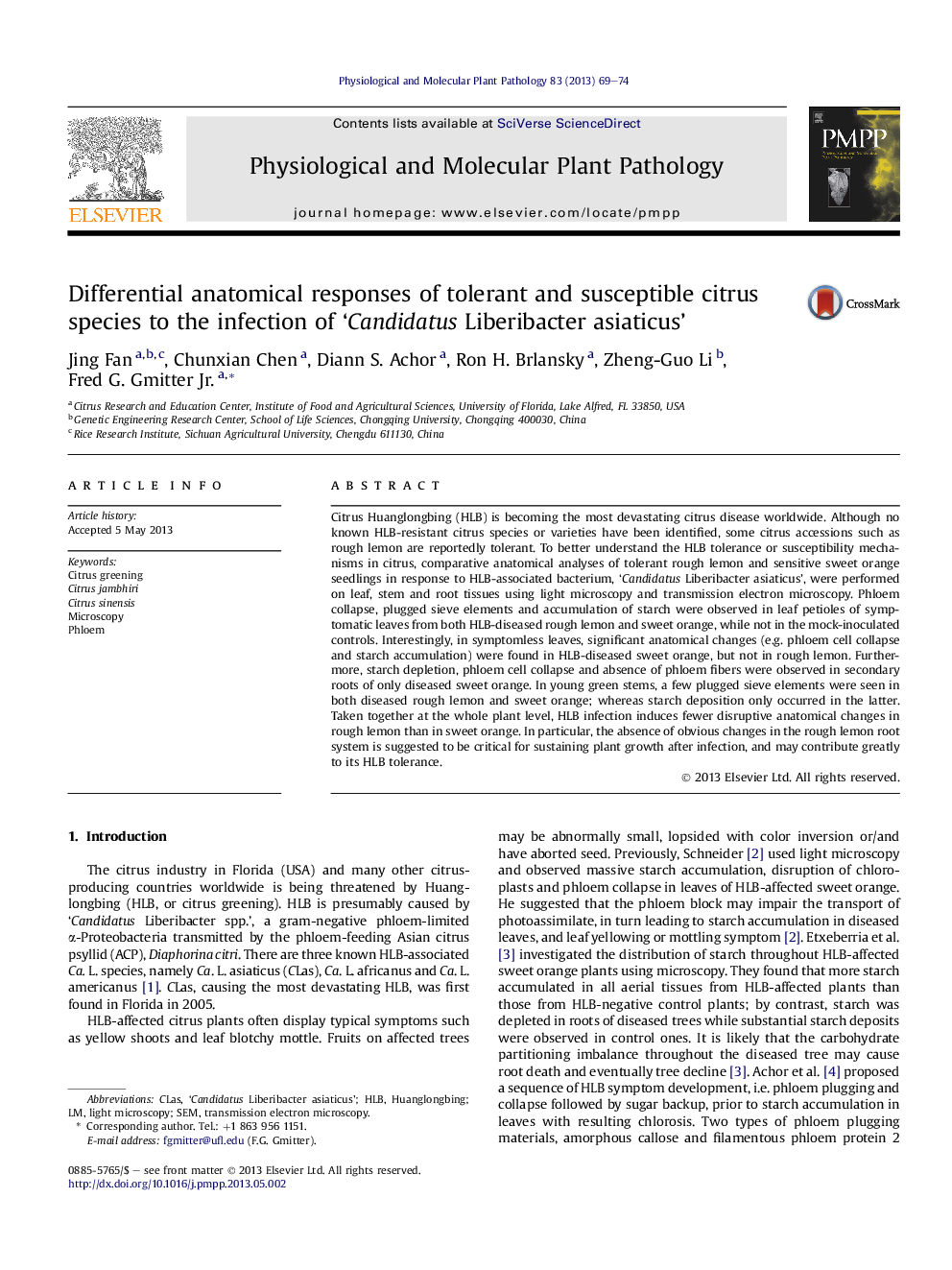| کد مقاله | کد نشریه | سال انتشار | مقاله انگلیسی | نسخه تمام متن |
|---|---|---|---|---|
| 2836359 | 1570856 | 2013 | 6 صفحه PDF | دانلود رایگان |

• HLB-induced anatomical changes were examined in rough lemon and sweet orange.
• Starch depletion and phloem cell collapse occurred in diseased sweet orange roots.
• Roots in diseased sweet orange were rotted and degraded.
• Fewer anatomical changes were observed in HLB-diseased rough lemon.
• These differences could contribute to HLB tolerance or sensitivity.
Citrus Huanglongbing (HLB) is becoming the most devastating citrus disease worldwide. Although no known HLB-resistant citrus species or varieties have been identified, some citrus accessions such as rough lemon are reportedly tolerant. To better understand the HLB tolerance or susceptibility mechanisms in citrus, comparative anatomical analyses of tolerant rough lemon and sensitive sweet orange seedlings in response to HLB-associated bacterium, ‘Candidatus Liberibacter asiaticus’, were performed on leaf, stem and root tissues using light microscopy and transmission electron microscopy. Phloem collapse, plugged sieve elements and accumulation of starch were observed in leaf petioles of symptomatic leaves from both HLB-diseased rough lemon and sweet orange, while not in the mock-inoculated controls. Interestingly, in symptomless leaves, significant anatomical changes (e.g. phloem cell collapse and starch accumulation) were found in HLB-diseased sweet orange, but not in rough lemon. Furthermore, starch depletion, phloem cell collapse and absence of phloem fibers were observed in secondary roots of only diseased sweet orange. In young green stems, a few plugged sieve elements were seen in both diseased rough lemon and sweet orange; whereas starch deposition only occurred in the latter. Taken together at the whole plant level, HLB infection induces fewer disruptive anatomical changes in rough lemon than in sweet orange. In particular, the absence of obvious changes in the rough lemon root system is suggested to be critical for sustaining plant growth after infection, and may contribute greatly to its HLB tolerance.
Journal: Physiological and Molecular Plant Pathology - Volume 83, July 2013, Pages 69–74